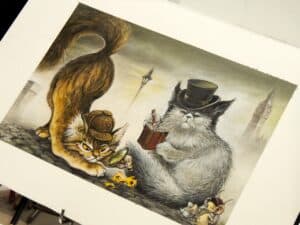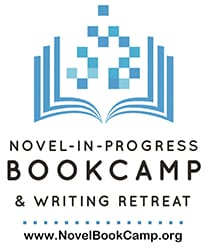Style and Voice
Your writing style is the physical means you use in writing to create your scene/setting/plot/characters. With what descriptors do you fashion them; how do you create dialog; your vocabulary, your syntax and punctuation, the way you develop your narrative. Do you employ symbols, euphemisms, metaphors, lengthy descriptions, lots of rhetorical questions or dialect? Adjectives or adverbs? Multisyllabic language or terse and tight phrasing? Make up words to fit your scenario?
The style of your writing should be obviously yours. Even if you practice writing like someone you admire, you want what and how you write to be recognizable. Much of this will come from your heritage, your family language of origin, your experiences, and your community or lifestyle.
For example, Charles Frazer, Cold Mountain, uses dashes instead of quotation marks, as does Amor Towles in Rules of Civility. George Saunders, Lincoln in the Bardo, employs script writing techniques to portray his dead characters, and lower case proper names, interspersed with news bits and book quotes from period reality.
Stylized stories can be told through diary or letter (epistolary), like Bridget Jones’s Diary, or The Screwtape Letters; through illustrations (comics or graphic novels); photographs and other illustrations such as children’s books, even emojis and illustrations, poetry, and music.
Your authorial voice happens from experience and outlook. You can’t rush it or fake it or research it; you have to live it first. This is your authenticity, your expertise and ownership of what you write. Is your glass half-full or half-empty? Are you emotional or stoic? Sunrises or sunsets? Peace or conflict? Naïve or well-seasoned or intimate with someone who is? How you respond to life, relationships, and death is your outlook and it will show in your work. The line between believable and unbelievable may thin perilously at times, but it is there. The trick is to help the reader suspend disbelief by making the rest of the story relatable.
For example, Isak Dinesen/Karen Blixon employs great, sweeping, repetitive lyricism to set you in place in Out of Africa. Gillian Flynn in Gone, Girl uses an unreliable narrator in both Nick who sees what he wants, and in Amy’s diary. JRR Tolkien retold great epics. Jodi Picoult employs devastating disease or illness or other situations that drive her characters.
Authors in well-defined genres/branding have a particular voice; for example, if you pick up a book by Agatha Christie, SJ Rozan, Tom Clancy, John Grisham, or Bradley Beaulieu, you generally know what you’re getting when you read their work.
An author should not intrude in his story. Alfred Hitchcock placed himself in the crowd for a peek from the other side, but did not intentionally step in and stage direct from the background or make his movies about showcasing his knowledge. He let his technique speak for itself. If his movies weren’t his own writing, he interpreted them for screen with his own recognizable style (close-ups, limited viewpoints, pans, tight angled shots) that drew a following.
Authors who develop and understand their characters and have a grasp of pacing and flow and genre/plot know how to trust their characters or setting to develop the story. An author who trusts his skill gives his characters unique mannerisms/speech distinctions (character voice)/quirk to convey the story. A finely developed setting or character arc will be the foundation along which the story will naturally flow. Authors will not have to step in to explain any aspect of the story or backstory as the journey unfolds.
Here are some resources:
https://www.well-storied.com/blog/writing-style-and-voice
http://nybookeditors.com/wp-content/uploads/2017/05/How-to-Find-Your-Writers-Voice.pdf
https://www.dailywritingtips.com/word-origin-influences-your-writing-voice/
https://www.wordtune.com/blog/tips-for-developing-your-writing-style
Writing exercise:
Look at the first three pages of your work in progress. Find at least three unique mannerisms in your work, whether it’s sentence or paragraph structure, some aspect of dialog, preferred setting, pace, character quirks, tone of the work, or how you use description.
Make a list of at least five adjectives to describe your writing.
Write one sentence to your reader.
My voice is reflected by how I:
My style shows in:






